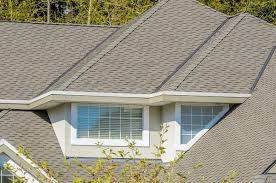
Hip vs Gable Roofing: Choosing the Right Roof for Your Home
When it comes to home improvement and design, choosing the right type of roofing is a crucial decision for homeowners. Two of the most popular roofing styles are hip and gable roofs. Both have distinct characteristics, advantages, and disadvantages. In this comprehensive guide, we’ll explore the intricacies of hip and gable roofing to help you make an informed decision.
Understanding Hip Roofs
Design and Structure
A hip roof is characterized by slopes on all four sides, which are all equal in length. The sides converge at the top to form a ridge, creating a more stable and sturdy structure. This design allows for excellent water and snow drainage and is less susceptible to damage from high winds.
Advantages
One of the primary advantages of hip roofs is their durability and stability. The sloped design allows for efficient water and snow runoff, reducing the risk of water damage. Hip roofs also offer extra living space, which can be utilized for an attic or a vaulted ceiling.
Disadvantages
The complexity of the design makes hip roofs more expensive and time-consuming to construct. The additional seams can potentially lead to leaks if not properly installed and maintained.
Understanding Gable Roofs
Design and Structure
Gable roofs, also known as pitched or peaked roofs, are easily recognized by their triangular shape. They consist of two sloping sides that meet at the ridge, creating end walls with a triangular extension, known as a gable.
Advantages
Gable roofs are simpler to design and build, making them a more cost-effective option. Their steep pitch allows for excellent water and snow drainage and provides more space for an attic or vaulted ceilings.
Disadvantages
While gable roofs are generally cheaper, they are not as resistant to high winds as hip roofs. If not properly constructed, the gable end can collapse under extreme wind conditions. Also, the simplicity of the design may not provide the same aesthetic appeal as a hip roof.





Comparative Analysis
Weather Resistance: Hip roofs have an edge over gable roofs in terms of weather resistance. Their design is more suitable for regions that experience high winds or heavy snowfall.
Cost and Complexity: Gable roofs win in terms of cost-effectiveness and ease of construction. Their simple design means they require less material and labor, making them a budget-friendly option.
Aesthetic Appeal: The choice between hip and gable roofs often comes down to personal preference in terms of aesthetics. Hip roofs offer a more uniform and symmetrical look, while gable roofs provide a classic, traditional appearance.
Space Utilization: Both styles offer additional attic space, but the layout differs. The hip roof’s complex structure may restrict the usable attic space compared to the more open space under a gable roof.


Suitability for Home Styles
Hip Roofs: Ideal for bungalows, ranches, and cottages, hip roofs blend well with a wide range of architectural styles. They are particularly suitable for homes in regions prone to high winds or hurricanes.
Gable Roofs: Gable roofs are well-suited for colonial, country, and traditional-style homes. They are a popular choice in regions with heavy snowfall, as their steep pitch helps in shedding snow and rain.
Both hip and gable roofs have their unique advantages, challenges, and aesthetic appeal. The choice largely depends on your region’s climate, your budget, and your personal taste in home design. At 5 Estimates, we connect homeowners with experienced contractors who can provide professional advice and quality service for all your roofing needs.
Cost Comparison of Hip and Gable Roofs
When evaluating roofing options, the cost is a significant factor for most homeowners. Understanding the cost implications of hip and gable roofs is crucial for making a budget-friendly choice.
Initial Installation Costs
Hip Roofs
Due to their complex structure, hip roofs generally have higher initial installation costs. The complexity arises from the additional materials required for the slopes and ridge, and the labor-intensive process of constructing a roof with multiple planes. Moreover, the precision needed to ensure proper alignment and sealing at the joints can add to the cost.
Gable Roofs
Gable roofs, with their simpler design, tend to be more cost-effective regarding initial installation. The straightforward construction process requires fewer materials and less labor, making it a more budget-friendly option. The reduced complexity also means there’s less likelihood of needing specialized labor, which can further drive up costs.
Long-Term Maintenance Costs
Hip Roofs
While the initial cost is higher, hip roofs can be more economical in the long run due to their durability and stability. They are less prone to damage from environmental factors like wind or heavy snow, which can lead to lower maintenance costs over time. Their design also ensures better water and snow drainage, potentially reducing the risk of water damage.
Gable Roofs
The simpler design of gable roofs might lead to higher long-term maintenance costs, especially in areas prone to extreme weather. For instance, the gable ends can be vulnerable to wind damage if not properly constructed and maintained. However, the ease of access for repairs and maintenance can somewhat mitigate these costs.
Energy Efficiency and Additional Costs
Both roof types can be designed to be energy efficient, but the costs can vary. Hip roofs, with their additional structure, might offer better insulation, which can lead to energy savings. However, installing such energy-efficient features may add to the initial cost. On the other hand, gable roofs can easily accommodate additional features like solar panels or roof windows, but these add-ons will also impact the overall cost.


Insurance Considerations
It’s also worth noting that the type of roof can affect homeowners’ insurance rates. Generally, hip roofs may result in lower insurance premiums due to their high wind resistance. Insurance companies often recognize the reduced risk of damage with hip roofs and might offer lower rates compared to gable roofs.
Making the Right Choice
The decision between a hip and a gable roof should consider both immediate and long-term financial implications. While gable roofs might be more affordable initially, hip roofs could offer savings in maintenance and insurance costs. Homeowners should evaluate their specific needs, the local climate, and their budget to make an informed decision.
At 5 Estimates, we understand the importance of balancing cost with quality. Our network of trusted contractors can provide detailed quotes and guidance to help you choose the right roof for your home, ensuring that you make a decision that’s both aesthetically pleasing and financially sound.
If you’re looking to repair or replace your roof we would love to connect you with reliable roofers in your area for you to compare quotes and save!


Leave a Reply